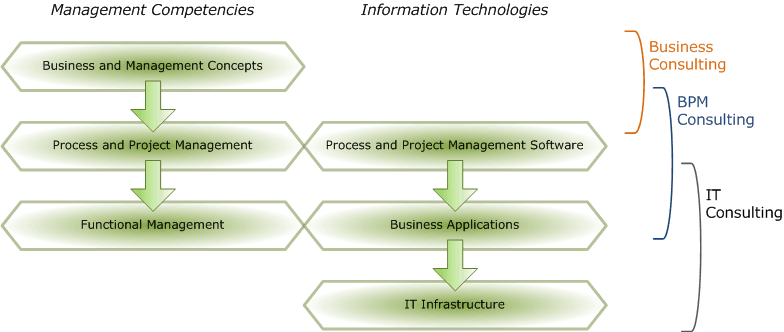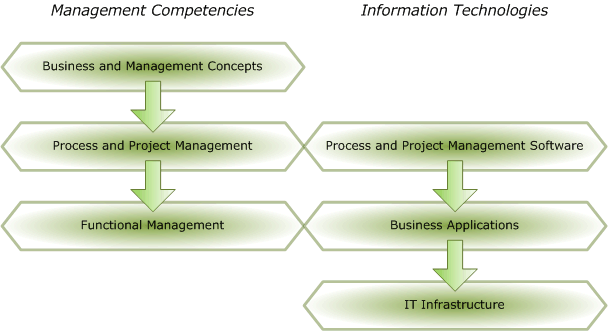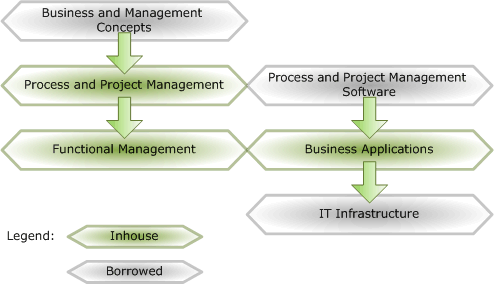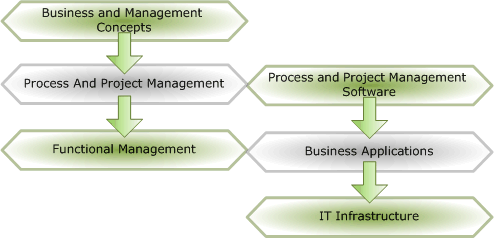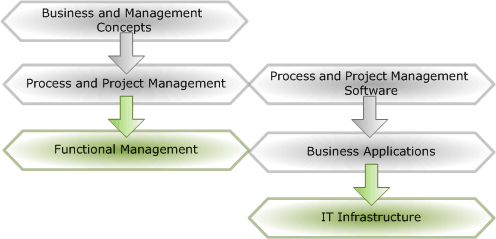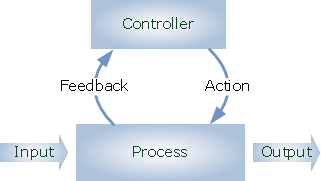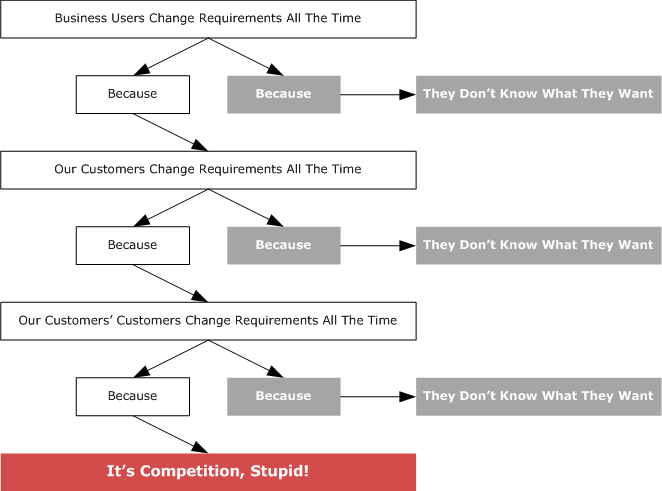I came to the conclusion that we should more agressively offer the express analysis of business processes as a phase preceding BPM projects.
The big issue are potential customers shying away like the devil from holy water as soon as they hear about business processes analysis. I understand why: too many analysts have already been there so the company which paid once for a many man-months project aiming at analysis and/or documenting the business processes hierarchy is unlikely to go on it again.
But catching a business process that happened to be at hand means falling into another extreme. The company will save time and resources by not performing the analysis of upper-level business processes but it will suffer from a risk that much greater resources spent to a BPM project will not be aimed at the spot able to deliver the greatest outcome.
Let’s consider the business processes constituing the value chain:
- Idea to product
- Product to inquiry
- Inquiry to order
- Order to cash
- After sale
Just as a chain is only as strong as the weakest link the performance of a company as a whole may be determined by the performance of the bottleneck - the least efficient process (the “constraint” in terms of Goldratt’s Theory of Constraints). An increase of the constraint’s productivity say by 10% would increase company’s throughput by about the same 10%. The increase of productivity of any other process of the chain gives nothing. Hence the extreme importance of choosing the right target for a BPM initiative.
Typically the market is the constraint in a modern economy. But how exactly it’s constraining - by the rate of the inquiries (item 2 above)? Or by our ability to convert an inquiry into the order (item 3)? Or maybe we should pay more attention to after-sale processes (item 5)? It may happen that we perform excellent at the sales process (item 4) but lose the client and another 10 potential ones due to bad claims processing.
I guess most managers know intuitively where their company’s bottleneck is at the upper level. But upper-level processes are too huge to aim a BPM project at them directly. The bottleneck process should be refined to subprocesses and the bottleneck should be found at that level. Will the intuition work there too?
The major concern at the preliminary stage is keeping the timeframe and costs low. We offer two mini projects that precede the main BPM project:
- The value chain analysis. The value chain template above is adapted to the company’s business(es) and vocabulary. The top-level processes dictionary and diagram are created. E.g. generic “product to inquiry” process is mapped to specific company’s processes of new product promotion, marketing campaigns etc. Major supporting processes are identified too.
- Process gap analysis and setting priorities. By questioning managers and specialists we figure out how well each of the processes identified at step 1 is executed if compared to the theoretical maximum achievable with the resources available. Then performances of the processes are compared to each other, revealing the bottleneck. A series of workgroup meetings and brainstorming sessions are aimed at discovering quick fixes as well as directions for long-term continuous improvement.
Each project lasts two weeks. The most part of the job is done by the customer’s managers and employees themselves, our role is as follows:
- Provide the essential background in BPM, value chain, theory of constraints, agile methodologies
- Facilitate and moderate meetings and brainstorming sessions
- Wrap the results into documents
In addition to the main goal of identifying the most promising target for BPM these activities result with a team able to develop the generated ideas and to convert them into executable business processes. Which remains the goal after all, not the analysis for it’s own sake.
It was Gartner’s analyst Bill Rosser who pushed me to promote this approach more agressively. His abstract “Gartner Identifies Seven Major Guidelines to BPM Project Success” introducing the upcoming BPM conference says:
“A small number of limited-scope projects is best to provide concentrated focus on achieving results and to spread the word regarding a high-value payoff. In order to surface smaller candidates, it is important to first create a higher-level contextual business process model to find the best opportunities.”
So true.

